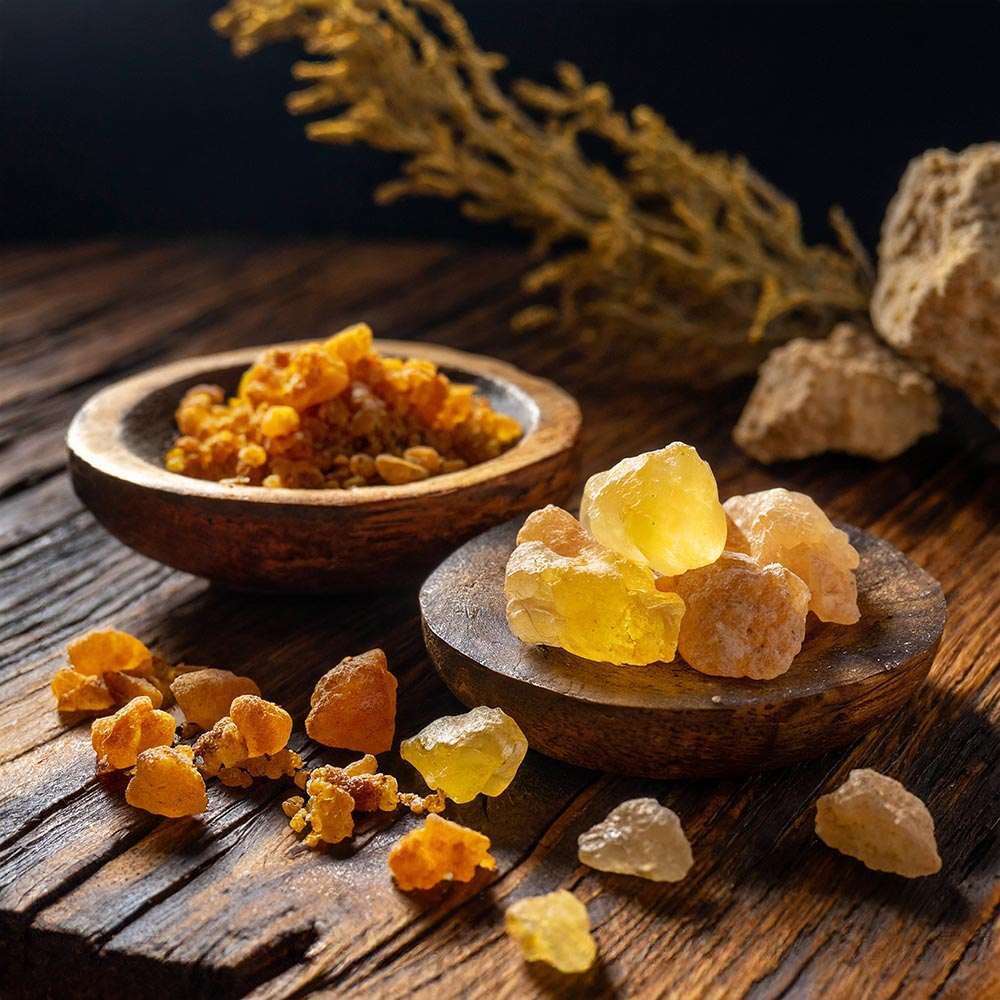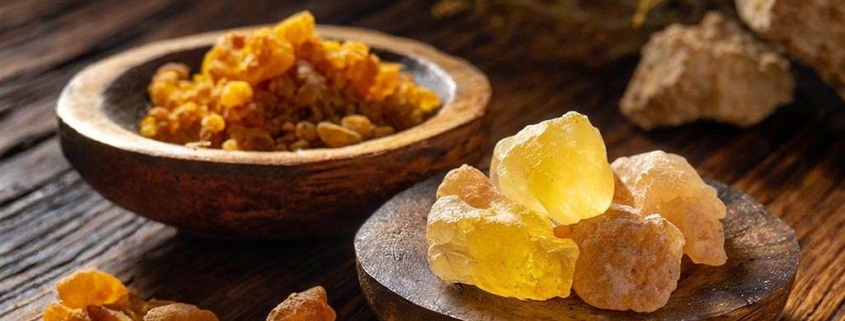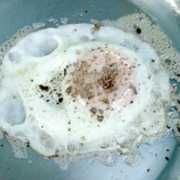Creating Resinous Perfumes: A Novice Perfumer’s Guide

Resinous perfumes are a category of fragrances composed of various types of resins as a base note upon which the rest of the scents are built. Resins, also known as balms, are thick, sticky, viscous substances exudated from trees. When resins or balms are used as base notes, also known as balsamic notes, to create sweet, woody, spicy, complex scents, they anchor the entire scent profile and allow it to develop over time. These resinous perfumes often fall into the amber or oriental fragrance family, globally famous for their scent opulence and extended longevity.
Table of contents
-
What are resinous perfumes?
-
Understanding resins
-
The art of blending resins
-
Tools and materials needed
-
Step-by-step guide to creating resinous perfumes
-
Aging and maturation
-
Testing and refining your creation
What are resinous perfumes?
Resinous perfumes are a category of fragrances composed of various types of resins as a base note upon which the rest of the scents are built. Resins, also known as balms, are thick, sticky, viscous substances exudated from trees. When resins or balms are used as base notes, also known as balsamic notes, to create sweet, woody, spicy, complex scents, they anchor the entire scent profile and allow it to develop over time. These resinous perfumes often fall into the amber or oriental fragrance family, globally famous for their scent opulence and longer longevity.
The speciality of resin in fragrance
Resins have been used as primary ingredients in perfumes and other fragrances since ancient times. Resins or balms are highly fragrant exudates in certain trees that can add a heavy, sweet, woody accord to perfumes. They have also been burned as incense in numerous rituals for centuries. Moreover, resins and resinous perfumes have a deep-rooted history of medicinal and therapeutic uses.
Understanding resins
Various types of trees produce different aromatic resins or saps, which is why a variety of resins are used in perfumery.
Types of resins used in perfumery
Some of the most common resins used in perfumery may include:
Frankincense: an aromatic viscous sap steeped by the trees of the Boswellia family. It is widely used in incense and perfumes.
Benzoin: an aromatic resin collected from the trees of the genus Styrax, used for both perfumery and therapeutic purposes.
Myrrh: a dark-brown aromatic gum with a rich, warm, balsamic scent. It possesses analgesic and antiseptic benefits.
Copahu Balm: Copahu balm or Copaiba is derived from the bark of the tree family Copaiferra officinalis. This resin has been found to have significant antibacterial properties that can help with a number of health issues, especially in chronic cases such as chronic catarrh, bronchitis, and gonorrhea.
Galbanum is a sap produced in the umbrella-like flowering shrubs related to the parsley and celery family. Widely known for its noticeable aroma-therapeutic and medicinal properties.
Labdanum: collected from sticky Cistus plant, also known as Rock Rose. It’s one of the oldest resins used in perfumery documented with ancient cultures.
Styrax: This resin is derived from trees belonging to the plant family Liquidambar orientalis, native to Asia Minor, Syria, Africa, and Turkey. The major compound is styrol, which is widely used in many floral fragrances.
Here you can see some of our pure and natural Resinous Perfumes.
The characteristics of resinous notes
Resinous notes are known for their rich, deep, earthy, balsamic flavor and are used in perfumes as fixatives or base notes. They add extra opulence and longevity to fragrances, making them more elegant, inviting, and luxurious.
The art of blending resins
Tips for blending resinous notes
When it comes to creating a resinous perfume formulation, blending notes properly is one of the most critical aspects of combining all fragrance materials or essential oils harmoniously to satisfy your nose and meet your beneficial aims. However, an ideal perfume composition consists of a blend with up to three aroma notes: base note, middle or heart note, and top note.
Base notes serve as the foundation or backbone of the blend and what lasts the longest. So, users remember most of the base notes about a particular perfume. The resins or gums serve as a base note, and this is the first thing a perfumer needs to add upon which the rest of the perfume blend is built, consecutively with the middle or heart notes and top notes. A successful blend must have a combination of all three notes.
Creating a balanced fragrance profile
Creating resinous perfume is an intricate and exquisite art. Like composing the musical notes in a song, a perfume blend contains all three notes in a melodious manner. Perfumers carefully mix resinous base note ingredients with other middle and top note ingredients such as floral notes, spices, and essential oils to get a final resinous fragrance composition that is chemically scientific and harmoniously balanced.
Fragrance blends used for therapeutic purposes typically contain only one base note essential oil, and those used for aromatic purposes may contain one or more base note essential oils to affix more character.
Tools and materials needed
To help you get started, here’s a list of essential tools and equipment you initially need. We discuss this topic more minutely during our intensive 6-day perfume-making course. You’ll get more information and recommendations when you book a slot with our natural perfumey workshop.
Basic equipment for perfume-making
Beakers: a couple of larger beakers and a few 25-30 ml beakers. Use only glass beakers, ideally borosilicate glass-made beakers.
Pipettes: required for transferring raw materials and liquids from one place to another. We recommend glass pipettes as they can be recycled or reused. Although disposable ones are cheaper and glass ones are more expensive, they are worth the investment.
Bottles: required for storing samples, trials, dilutions, accords, and blends and also for packaging the final ones.
Digital scales: required for measuring accurately to get desired results when reproducing or blending. A scale measuring down to 0.001 g is ideal but could be expensive. One measuring 0.01 g. is also Okay.
Scent strips: also known as fragrance blotters or smelling mouillettes, are required for sampling fragrances or odors.
Stirring rods: we recommend glass rods so you can wash and reuse them over and over.
Eye droppers and bottle caps: required for dilutions and to close the bottles where you will store your blends, trials, and accords.
Filter paper and funnel (lab quality): Filter paper is required to filter trials, blends, tinctures, and perfumes, and funnels are needed for pouring liquids from one larger container to a smaller one so that it does not spill everywhere.
Adhesive labels (small): small adhesive labels are required for labeling bottles to identify what they contain.
Magnetic bars and stirrers: you will need magnetic bars and stirrers to mix and dissolve stubborn ingredients.
Metal spatulas and other tools: required to work with solid, hard, waxy, and powdered ingredients.
Protective clothing: some ingredients may create permanent marks on your clothes or surfaces, so you will need some protective cover. You will also need masks, gloves, safety glasses, etc.
And indeed, don’t forget the all-important notebook and pen to document whatever you do.
Recommended ingredients
We recommend using only natural and pure ingredients that don’t contain any types of adulterants, including:
- Natural gums or resinoids like benzoin, oud, styrax, frankincense, myrrh, copahu balsam, labdanum, galbanum, pine, fir, and more.
- Pure essential oils such as bergamot, patchouli, rose, jasmine, and orange, just to name a few.
- Pure carrier oils like olive, jojoba, sweet almond, coconut, etc.
- Natural absolutes
- Tinctures
- Spices such as saffron, ginger, etc.
- Animal extracts such as civet and ambergris (of course, they are labeled as non-vegan).
- Pure undenatured alcohol
- Purified water
We don’t recommend using any types of synthetic chemicals when it comes to creating natural resinous perfumes. Make sure your suppliers provide only pure and natural ingredients.
Step-by-step guide to creating resinous perfumes
Choosing your base notes
Base notes are the backbone or foundation of a fragrance. They are heavier materials, enabling them to add more richness and depth to the scent that evaporates more slowly than the middle and top notes, making the scent more stable and lasting for hours or even days. When creating resinous perfumes, you can consider choosing notes derived from plant gums and resins such as myrrh, styrax, benzoin, frankincense, labdanum, and oud. Remember, depending on the other compounds you use as heart and top notes, each base note impacts the whole formulation differently.
Selecting complimentary middle and top notes
Middle notes are the core or essence of the fragrance, which is why they are also called heart notes. They make up around 60-70% of the overall scent and last longer than the top notes, ideally one to five hours.
When selecting middle notes, you can consider fruity, floral, spicy, and green. Here’s a list of middle notes often recommended for resinous perfumes:
- Fruity: pineapple, blackcurrant, myrtle
- Floral: jasmine, ylang-ylang, rose, violet, frangipani, geranium
- Spicy: vanilla, cinnamon, nutmeg, clove
- Herbal: rosemary, thyme, tomato leaf
- Green: eucalyptus, pine, green tea
The top notes generate the first impression and are designed to capture immediate attention. Light, uplifting, bright, and fresh notes are highly complementary and harmonious in resinous perfumes.
Here are some examples:
- Light floral: lavender, orange blossom, rose, neroli
- Citrus: lemon, grapefruit, bergamot
- Herbs: mint and basil
The importance of fixatives in resinous blends
Fixatives play an essential role in resinous perfumes. They help equalize the vapor pressures among raw ingredients, extending the fragrance’s longevity. Thus, they help limit instability, extend aromatic pleasure, and designate the final scent profile.

The mixing process: techniques and tips
Creating resinous fragrances is an exquisite art that needs a deep competence in balancing resinous materials or gums with other fragrance elements like spice, floral, and green notes to get a desired rhythmic formulation.
Here are some tips to follow in the mixing process when creating resinous perfumes:
- Use resins as the base: resinous ingredients serve as base notes that help anchor the entire scent profile.
- Consider the character of your scent: think of the moods and emotions you want to evoke through your composition.
- Experiment with aroma compounds: try different aromatic blends, including essential oils, absolutes, and various animal and botanical extracts.
- Choose complementary other notes: pair with middle and base notes that help complement and balance. For example, pair oriental notes with woody ones to create a depth and warmth profile.
- Use scent strips: apply a few drops of your newly made blend and smell it to test the sample.
- Add fixatives: fixatives help extend the stability and longevity of the scent by reducing the evaporation rate.
Aging and maturation
The role of aging in perfume development
Aging is an essential process when developing a perfume. It allows different notes and scents to blend appropriately, making the perfume more complex and deep in nature. Perfumers do this to ensure that the desired formulation is achieved. Pure, high-quality natural perfumes are mostly aged for months and sometimes even years after the fragrance materials have been mixed.
How to properly age your resinous perfumes
Perfumers leave resinous perfumes to age in a dry and cool place, away from heat and light, as they may affect sensitive fragrance materials and change the original composition. Newly blended perfumes should also be kept in darker glass bottles rather than clear ones to protect them from photodegradation and ensure the stability of the formulation.
Testing and refining your creation
How to test your perfume
Use smell strips to test the perfume samples and check whether they evolve correctly over time, from initial top notes to gradual base notes. Also, consider applying a small amount of perfume to the pulse points, such as the inner elbow, to see how it interacts with your body chemistry and gives you a sense of smell.
Adjusting formulations for desired effects
Finally, check your formulation to see whether it produces the desired effects. If necessary, add notes or alcohol and make adjustments to achieve the perfect equilibrium and balance of components. That’s it—you’re done.
Encouraging to experiment with resinous blends
Resinous perfumes have been valued for centuries for their complex, intricate aromas and unique healing properties. They are safe, non-toxic, and also eco-friendly. This category of scents taps into the opulent aroma-therapeutic potentials of natural resins. If you have yet to experience these magical fragrances, you should definitely consider giving them a try.
FAQs
What are the key steps in creating resinous perfumes?
Creating resinous perfumes is a long and intricate process. Some key steps include:
- Collecting resinous ingredients
- Extracting essential oils using various methods like steam distillation, enfleurage, and maceration
- Blending different notes
- Adding fixatives
- Aging
- Final adjustments
How do you choose the right resins for perfumes?
When choosing resins for perfumes, you might consider the following aspects:
Plant type: different plants produce different types of resins that possess different smells. For instance, fir, pine, and spruce have deep, rich, woody smells.
Fragrant profile: resins may have numerous scent profiles ranging from strong to soft to woody to creamy. Choose one that appeals to you or your customers.
Physical requirements: mind various physical factors such as potential environmental conditions and desired service life of the scent.
Quality and cost: match your performance needs with your budget.
What are some common mistakes to avoid when making resinous perfume?
Here are some common mistakes to avoid when making resinous perfumes:
Not considering the season: floral and fresh scents are lighter and best suited for summer months, while oriental and woody scents are deeper and best suited for winter months.
Not balancing resinous notes: resinous notes should be balanced with other heart notes and top notes.
Over-perfuming: wearing too much of resinous scents may bother you and others around you.
Can you provide a list of essential oils commonly used in resinous perfumes?
Essential oils that are commonly used in resinous perfumes may include:
See all our resinous perfumes
What equipment is necessary for crafting resinous perfumes?
Necessary equipment and tools for crafting resinous perfumes include:
- Glass beakers
- Pippetes
- Stirring rods
- Smell strips or fragrance blotters
- Small glass bottles
- Lab-quality filter papers and funnels
- 0.01 g digital scale
- Small adhesive labels
- Metal spatulas
- Protective clothing
- Magnetic bars and magnet stirrer





















Leave a Reply
Want to join the discussion?Feel free to contribute!